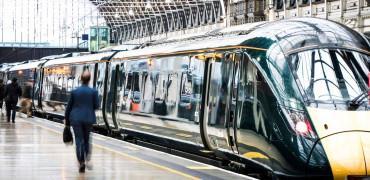Spring is very much upon us, and with lockdown easing I’ve been relishing the opportunities for reunions with friends and families on woodland walks with the dogs.
In so doing, I’ve also noticed many more gaps in the forest canopy than ever before, which leads me to ask the question: “where have all the trees gone?”
I am a strong advocate for planting more trees - after all Net Zero is not far away and we must be able to offset any emissions that are irreducible by that point.
However, it is arguably more important to preserve our established forests and woodlands in the UK. New trees take time to ramp up their sequestration potential, and older woodland supports biodiversity in ways that young trees cannot.
We are seeing a perfect storm of a hotter, drier spring that makes our woodland more susceptible to disease
Ashes to ashes
So why have I been noticing more holes appearing in the forest canopy when out walking the dog? And why is the National Trust having to cut down 10 times more trees this year?
The answer appears to be a perfect storm for UK woodlands as a hotter, drier spring that makes our woodland more susceptible to a disease known as 'Ash Dieback' – a highly destructive disease of ash trees, coupled with pandemic restrictions hindering Rangers work to mitigate its spread.
While the National Trust typically fells 4,000-5,000 trees a year, this year it faces having to cut down approx. 40,000 trees due to the spread of Ash Dieback.
Almost at crisis point
According to a report by the Woodland Trust, our native woodlands are just about at a crisis point with a mere 7% are in what is termed a ‘good’ condition.
https://www.woodlandtrust.org.uk/state-of-uk-woods-and-trees
In what is billed as the ‘first comprehensive assessment of their health’ the report found UK woodlands facing threats, such as pests and imported diseases.
Other areas have been lost to development and yet more areas face the dual impact of climate change and increasing levels of pollution.
And if that wasn’t bad enough, the report also says that specialist woodland birds, butterflies and other insects have fallen by almost half since the 1970’s.
Better than new
As mentioned above, we need to plant more trees to help mitigate the effects of climate change but the Woodland Trust was also clear that saving old woodland is much more beneficial than merely planting new trees.
Whilst creating new woodlands is important, the report says that it counts for very little if existing woods are lost.
Firstly, the rate of tree planting is nowhere near the levels needed and less than half of the new trees are even native species of the UK.
Couple this with the growth in forestry plantations, which support relatively little biodiversity and issues such as Ash Dieback suddenly have the potential to become a major catastrophe for our woodlands and forests.
Tackling the climate emergency
Trees should play an important role in helping the UK tackle the climate emergency and restore wildlife in one of the most nature-depleted countries in the world. They can also provide services such as reduced flooding and shade, as well as being important for many people’s wellbeing.
Last December, the Climate Change Committee called for 2 billion new trees to be planted by 2050 – which would see an increase in national coverage from around 13% to 18% of the country.
However, this would require a tripling of the current growth rate and, in addition to anything planned, the Woodlands Trust also calls for ‘natural’ restoration by letting trees plant themselves.
Loud and clear
Abi Bunker, the Woodland Trust’s director of conservation is on record as saying: “It’s reaching crisis point. The warning signs are loud and clear. If we don’t tackle the threats facing our woods and trees, we will severely damage the UK’s ability to address the climate and nature crises. Green spaces that are rich in wildlife, bird song and blossom are also intrinsically linked to our own health and wellbeing.”
As a member of The Sustainability Team here at Mitsubishi Electric, I can say that we have heard the message and we are exploring all of the ways we can live up to our own Environmental Vision 2050.
This calls on us all to "Protect the air, land, and water with our hearts and technologies to sustain a better future for all".
Jack Bain is a member of the Sustainability Team



